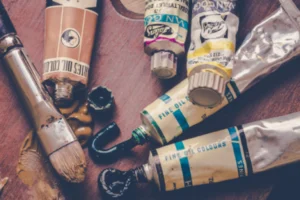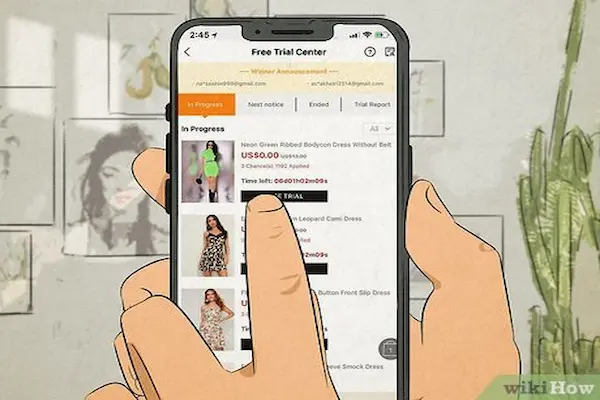Crochet and Sustainability – Learn how to make your crochet projects more sustainable with eco-friendly yarns, ethical habits, and low-waste crafting practices.
Anúncios
Crocheting is a joyful and creative hobby, but it can also be a conscious step toward a more sustainable lifestyle.
As awareness about environmental impact grows, many crafters are looking for ways to reduce waste and make eco-friendly choices.
Fortunately, crochet offers many opportunities to be kind to the planet while still enjoying your favorite craft.
From choosing the right materials to rethinking your project habits, every small change makes a difference.
This article explores practical and accessible ways to make your crochet more sustainable without sacrificing creativity or quality.
Whether you’re just starting or a seasoned maker, these tips will help you align your passion for crochet with eco-conscious values.
Why Sustainability Matters in Crochet
Sustainability in crochet is about reducing your environmental impact while enjoying a craft you love.
The textile industry is one of the largest polluters in the world, contributing to waste, water pollution, and carbon emissions.
By making thoughtful choices in your crafting, you can help reduce demand for fast fashion and synthetic materials.
Crochet also encourages slow fashion—handmade, intentional items that are built to last.
Choosing eco-friendly options helps preserve natural resources and supports ethical production.
Every skein of yarn, every tool you choose, and every project you make is an opportunity to support a healthier planet.
Choose Sustainable Yarn Options
The type of yarn you use plays a major role in the sustainability of your crochet.
1. Natural Fibers
Yarns made from natural fibers such as organic cotton, bamboo, hemp, and linen are biodegradable and renewable.
These fibers decompose more easily and require fewer chemicals to produce than synthetic yarns.
Organic cotton is grown without harmful pesticides, making it safer for the environment and for workers.
Hemp yarn is especially sustainable because the plant grows quickly and enriches the soil.
Linen, made from flax, is strong, breathable, and naturally eco-friendly.
Bamboo yarn is soft and luxurious, though it’s important to choose brands that use environmentally conscious processing methods.
2. Recycled Yarns
Recycled yarns are made from post-consumer or post-industrial waste, such as reclaimed cotton or polyester.
They reduce landfill waste and often require less water and energy to produce.
Look for yarns made from recycled jeans, t-shirts, or plastic bottles.
Some brands offer recycled blends with a stylish, textured look that’s perfect for accessories or home decor.
3. Local and Small-Batch Yarns
Buying yarn from local farmers or independent dyers helps support small businesses and reduces shipping emissions.
Local wool is a great option if it’s produced humanely and processed without harsh chemicals.
Ask vendors about their sourcing and dyeing practices to ensure transparency.
Small-batch yarns also often use natural dyes and more ethical labor practices.
Avoid Harmful Synthetics
Many common yarns are made from synthetic fibers like acrylic, polyester, and nylon.
These materials are derived from petroleum and are not biodegradable.
When washed, synthetic yarns release microplastics into waterways, contributing to pollution.
Although synthetic yarn is often inexpensive and widely available, it’s less durable in the long term.
Opting for natural or recycled alternatives is a better choice for sustainability and long-lasting projects.
If you must use synthetic yarn, consider doing so sparingly or for items that require strength and durability.
Use Every Scrap: Zero-Waste Crochet Tips
A zero-waste mindset helps you reduce leftover materials and make the most of every project.
1. Save Yarn Scraps
Collect leftover yarn ends in a jar or bag for future use.
These scraps can be used to stuff amigurumi, make pom-poms, or create scrap blankets.
Even the smallest pieces can be incorporated into art projects or colorwork.
2. Scrap Blankets and Projects
Granny squares, corner-to-corner blankets, and stripy scarves are perfect for using leftover yarn.
Combine different colors for a vibrant and unique patchwork look.
You can also alternate scrap yarn with neutral colors for a more balanced design.
3. Join-as-You-Go Techniques
Avoid wasting yarn on seaming by learning join-as-you-go methods.
This reduces waste and creates a more seamless, polished finish.
Reuse and Repurpose Materials
Instead of always buying new, explore ways to reuse yarn and other crochet materials.
1. Frogging Old Projects
If you have old or unfinished crochet items, consider unraveling them and reusing the yarn.
This is known as “frogging” and is a great way to reclaim materials and reduce clutter.
Frogged yarn can be washed, reconditioned, and rewound into usable skeins.
It’s especially helpful for expensive yarns or projects that no longer fit your style.
2. Upcycling Thrifted Textiles
Look for sweaters at thrift stores that can be unraveled and turned into new yarn.
This gives old garments a second life and reduces demand for new products.
You can also cut fabric strips from worn-out clothing and use them for chunky projects like rugs or baskets.
3. Use Natural Dyeing Techniques
Try dyeing plain yarn using natural materials like avocado skins, turmeric, onion peels, or black beans.
This reduces reliance on synthetic dyes and creates earthy, unique colors.
Choose Sustainable Tools for Crochet and Sustainability
The tools you use can also contribute to a more sustainable crochet practice.
1. Wood and Bamboo Hooks
Wooden and bamboo crochet hooks are renewable, biodegradable, and often handmade.
They offer a smooth crocheting experience and are lighter than metal hooks.
Look for hooks made from responsibly harvested wood or recycled materials.
2. Eco-Friendly Storage Solutions
Instead of plastic containers, use fabric pouches, baskets, or repurposed boxes to store your supplies.
Look for handmade project bags made from organic cotton or recycled fabrics.
This helps reduce plastic use and keeps your workspace eco-conscious.
3. Repair, Don’t Replace
Fix broken hooks or frayed tools instead of discarding them.
A little sanding or wood polish can extend the life of wooden hooks.
Use washi tape or small cases to reinforce cracked yarn needles or stitch markers.
Mindful Making and Ethical Gifting
Being intentional about what you make can help reduce waste and overproduction.
1. Plan Projects Carefully
Before starting a project, think about how the item will be used.
Will it serve a real purpose, or is it something you’re making just to use up yarn?
Making functional items that last ensures your effort and materials aren’t wasted.
2. Make Items That Replace Single-Use Products
Crochet dishcloths, market bags, and reusable facial rounds can replace paper towels, plastic bags, and cotton pads.
These items are easy to make and offer everyday eco-friendly alternatives.
Use cotton or bamboo yarn for absorbency and durability.
3. Gift with Intention
When giving crochet items as gifts, consider whether the recipient will use and appreciate the item.
Personalized gifts made from sustainable materials add extra meaning and reduce waste.
Include care instructions to help recipients maintain the item for years.
Support Eco-Friendly Crochet Designers and Brands
Many designers and yarn companies are embracing sustainability and ethical practices.
Support creators who prioritize the planet in their designs, sourcing, and packaging.
Look for digital patterns rather than printed ones to reduce paper waste.
Some designers offer eco-focused collections or donate proceeds to environmental causes.
Research brands that use recyclable packaging, natural dyes, and low-impact production methods.
Spending your money on responsible products helps create a demand for better industry practices.
Reduce Energy Use While Crocheting
Even small habits can reduce your energy consumption while crafting.
Use natural lighting during the day instead of turning on lamps.
Keep your work in a shared space to avoid heating extra rooms.
Use washable crochet items like warm blankets to reduce your heating needs in colder months.
Unplug tools like electric winders or lamps when not in use.
These little changes contribute to a greener crafting lifestyle.
Recycle and Dispose Responsibly
Even the most eco-friendly practice produces some waste eventually.
Collect yarn labels and packaging and recycle them when possible.
Use compostable packaging for gift items or craft fair products.
Dispose of yarn scraps, broken tools, or unused supplies in creative or responsible ways.
Offer leftover materials to local schools, craft clubs, or donation centers instead of tossing them.
Crochet and Sustainability – Crochet as a Tool for Change
Crochet can also raise awareness about sustainability and inspire others to make greener choices.
Make projects that promote eco-friendly habits, like reusable bags or produce pouches.
Host workshops on sustainable crafting or teach others how to use scrap yarn creatively.
Use your social media platform to share your journey and encourage mindful making.
Join communities or initiatives that focus on sustainable fiber arts.
Your crochet work can become part of a broader conversation about conscious living.
Crochet and Sustainability
Sustainable crochet isn’t about perfection—it’s about making small, thoughtful choices that add up over time.
By choosing eco-friendly materials, reducing waste, and crafting with intention, you can enjoy your hobby while protecting the planet.
From your yarn stash to your crochet hook, every decision can be a step toward a greener lifestyle.
Crochet gives us the opportunity to slow down, create with purpose, and connect with the world around us.
So whether you’re a beginner or a lifelong crocheter, take the next step toward sustainability in your crafting journey.
Because making beautiful things shouldn’t cost the Earth.





